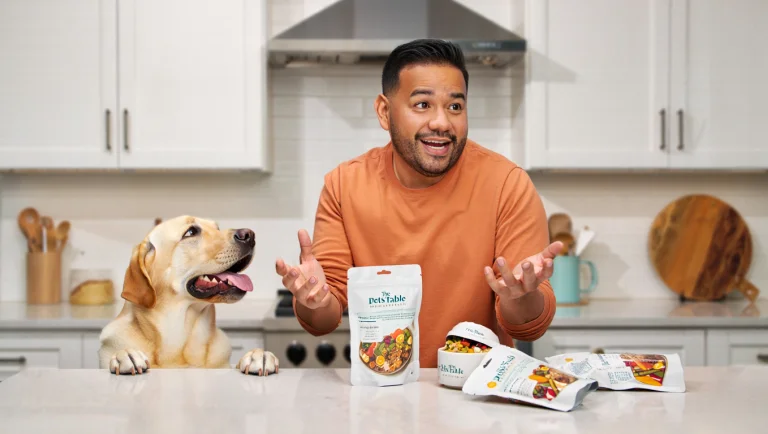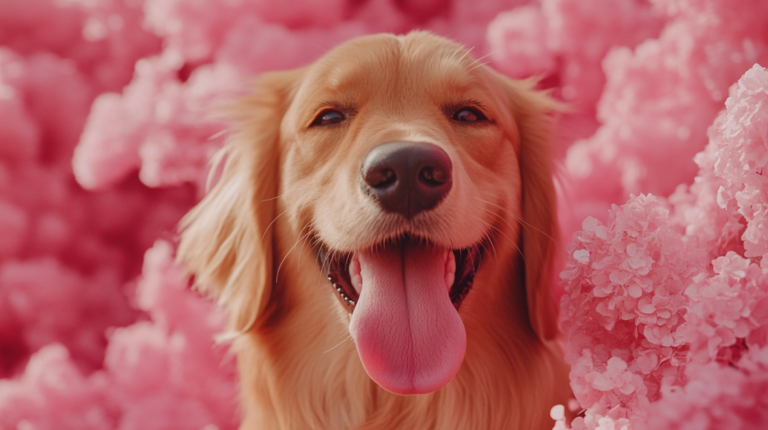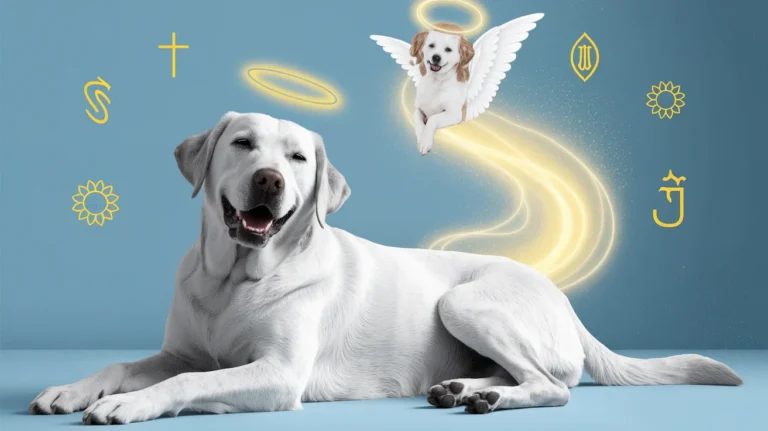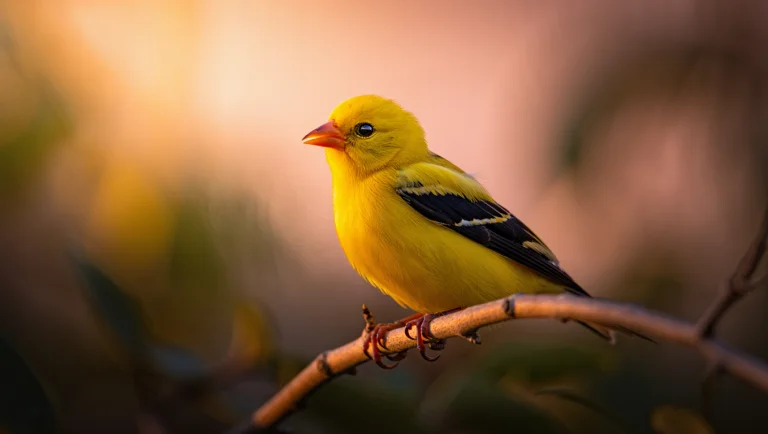Discover why Havana Brown cats make exceptional pets with their distinctive chocolate coat, emerald eyes, and affectionate personalities. Learn what makes these rare felines unique companions.
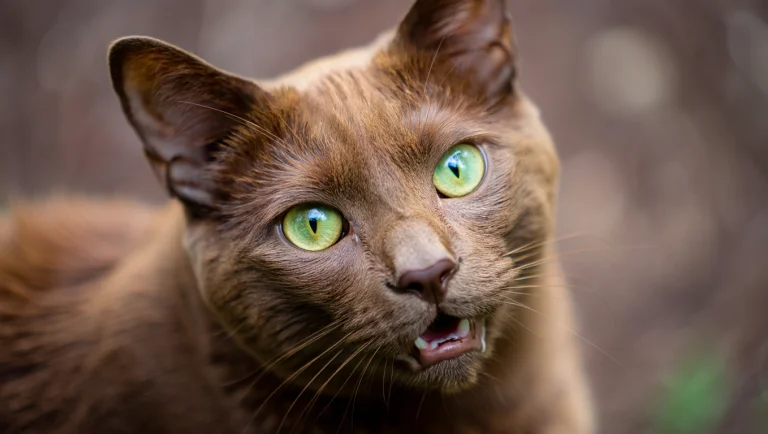
Table of Contents
The Havana Brown cat is often referred to as the “chocolate delight” of the feline world, and for good reason. With their rich mahogany coat, intelligent green eyes, and warm personality, these rare beauties captivate the hearts of cat enthusiasts worldwide. Originally developed in the 1950s through a cross between Siamese and domestic black cats, the Havana Brown has established itself as a distinct breed with a devoted following. Despite their name suggesting Cuban origins, these cats were actually developed in England, with their moniker coming from their resemblance to the rich color of Havana tobacco.
As one of the rarer cat breeds recognized by major cat associations, Havana Brown cats offer a unique blend of exotic appearance and affectionate temperament that sets them apart from more common household felines. Whether you’re considering adding a new feline companion to your home or simply curious about this distinctive breed, this comprehensive guide will explore nine compelling reasons why the Havana Brown makes an exceptional pet choice for cat lovers seeking something special.
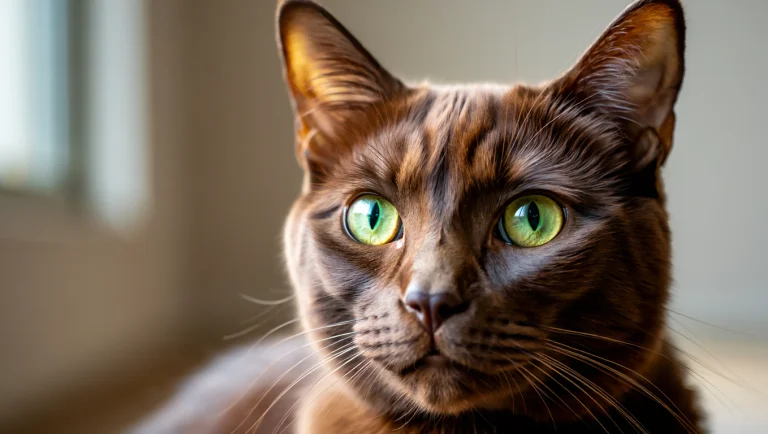
1. Distinctive Chocolate Brown Coat
The Signature Color
The Havana Brown’s most immediately recognizable feature is its striking coat color. Unlike other brown cats that might have tabby markings or color variations, the purebred Havana Brown displays a solid, rich mahogany-brown coat that is uniform throughout. The Cat Fanciers’ Association (CFA) specifically describes the ideal coat color as “rich and warm, showing a reddish-brown tone.”
Unique Coat Genetics
What makes the Havana Brown’s coat truly special is the genetic makeup behind it. The breed’s distinctive coloration comes from a specific recessive gene combination that produces the chocolate color. Both parents must carry this gene for kittens to display the signature brown coat, which partly explains the breed’s rarity.
According to feline genetics expert Dr. Leslie Lyons of the University of Missouri, “The Havana Brown’s color is the result of specific mutations in genes that control pigment production, creating one of the few truly brown cats in the feline world.”
Coat Maintenance
An additional benefit of the Havana Brown’s coat is its relatively low maintenance requirements. Their short, smooth fur requires minimal grooming compared to long-haired breeds. A weekly brushing is typically sufficient to remove loose hair and distribute natural skin oils, keeping their chocolate coat glossy and healthy.
Dr. Jennifer Conrad, a veterinarian specializing in feline care, notes: “Havana Browns have exceptionally soft coats that shed minimally compared to many other breeds, making them an excellent choice for owners who want a striking-looking cat without excessive grooming demands.”

2. Captivating Green Eyes
Emerald Gaze
Complementing their rich brown coat, Havana Browns possess vivid green eyes that create a stunning visual contrast. Unlike some breeds where eye color varies, the breed standard for Havana Browns specifically calls for eyes that are a deep, vibrant green. This eye color is considered so important to the breed that cat show judges place significant emphasis on it when evaluating Havana Browns in competitions.
Expressive and Alert
Beyond their beautiful color, a Havana Brown’s eyes are remarkably expressive, often reflecting their curious and intelligent nature. Cat behavior specialist Mikel Delgado, Ph.D., explains: “The way Havana Browns use their eye expressions and gaze patterns shows a high level of social intelligence and communication skills with their human companions.”
Developmental Timeline
Interestingly, Havana Brown kittens aren’t born with green eyes. Like many cats, they start with blue eyes that gradually change color as they mature. By four months of age, the green color begins to develop, reaching full intensity between 6-12 months. This developmental process gives owners the unique experience of watching their cat’s signature eye color emerge over time.
3. Affectionate and People-Oriented Personality
Natural Companions
Perhaps the most endearing quality of the Havana Brown is their remarkable affinity for human companionship. Unlike some more independent cat breeds, Havana Browns actively seek out interaction with their people and form deep, lasting bonds.
According to a 2022 survey conducted by the International Cat Association (TICA), Havana Brown owners consistently rated their cats highest in “affection toward owners” among medium-sized cat breeds, with 92% of respondents describing their cats as “extremely affectionate.”
Following Behavior
Havana Browns are known for their tendency to follow their owners from room to room, earning them the nickname “velcro cats” among breed enthusiasts. This behavior stems from their genuine desire to be involved in their humans’ activities, regardless of how mundane those activities might be.
Feline behaviorist Jackson Galaxy observes: “Havana Browns exhibit what we call ‘preferred person orientation,’ where they don’t just tolerate human presence but actively seek it out. This makes them ideal companions for people who want a cat that genuinely enjoys being around them.”
Balanced Independence
While they crave human interaction, Havana Browns also maintain a healthy level of independence typical of felines. They can entertain themselves when necessary but will almost always prefer to be near their people when given the choice. This balance makes them suitable for various household situations, from busy families to single-person homes.
Cat wellness expert Dr. Karen Becker notes: “Havana Browns have mastered that perfect balance between neediness and independence that many cat owners seek. They’re present without being demanding, affectionate without being clingy.”
4. Intelligence and Trainability
Problem-Solving Abilities
Havana Browns possess remarkable intelligence, consistently ranking among the smartest domestic cat breeds. Their problem-solving abilities extend to figuring out everything from how to open doors and cabinets to navigating complex puzzle toys designed to challenge feline intellects.
In a comparative study of feline cognitive abilities conducted by the University of Lincoln’s Animal Cognition Team, Havana Browns demonstrated above-average performance in tasks requiring memory, learning speed, and adaptive problem-solving compared to mixed-breed domestic cats.
Trainability
This intelligence translates to exceptional trainability. Havana Browns can learn commands, tricks, and behaviors that might challenge other cat breeds. Many owners successfully teach their Havana Browns to:
- Come when called by name
- Walk on a leash and harness
- Fetch small toys
- Perform simple tricks like high-five or sit
- Navigate agility courses designed for cats
Professional cat trainer Samantha Bell explains: “Havana Browns respond exceptionally well to positive reinforcement training methods. Their combination of intelligence and people-pleasing nature makes them quick to understand what you’re asking and motivated to participate.”
Mental Stimulation Needs
This high intelligence comes with a corresponding need for mental stimulation. Havana Browns thrive when provided with enrichment activities like puzzle feeders, rotating toy collections, and interactive play sessions. Without adequate mental challenges, they may become bored and potentially develop unwanted behaviors.
Veterinary behaviorist Dr. Sophia Yin recommends: “For intelligent breeds like the Havana Brown, mental exercise is just as important as physical exercise. Incorporating training sessions, puzzle toys, and novel experiences into their routine helps prevent boredom-related behavioral issues.”
5. Unique Vocalizations and Communication Skills
The Distinctive “Mew”
While many cat breeds are known for their vocalizations, the Havana Brown possesses a truly distinctive voice. Their meows are typically softer and more melodic than those of many other breeds, often described as a gentle “mew” rather than a strident “meow.”
Cat sound researcher Dr. Nicholas Nicastro, who has analyzed thousands of feline vocalizations, notes: “Havana Browns produce vocalizations in a unique frequency range that tends to be particularly appealing to the human ear. Their calls often contain more musical overtones than those of many other breeds.”
Conversational Nature
Beyond their pleasant tone, Havana Browns are notably “chatty” cats who engage in what many owners describe as conversations. They’ll often respond when spoken to, creating a back-and-forth exchange that strengthens the human-cat bond.
According to a 2023 survey by the Cat Fanciers’ Association, 78% of Havana Brown owners reported that their cats “always” or “usually” respond vocally when spoken to, compared to an average of 42% across all breeds surveyed.
Non-Verbal Communication
Havana Browns also excel at non-verbal communication. They’re known for their expressive body language, including:
- Soft head-butts to request attention
- Unique facial expressions that experienced owners learn to interpret
- Gentle paw taps when seeking interaction
- Tail positions and movements that clearly communicate their mood
Cat behavior consultant Pam Johnson-Bennett explains: “Havana Browns are exceptionally adept at developing a communication system with their humans. They learn which signals get results and refine those over time, creating a sophisticated language unique to each cat-human relationship.”
6. Playful Nature Throughout Their Lifespan
Kitten-Like Playfulness
Unlike some breeds that become sedentary as they age, Havana Browns typically maintain their playful, kitten-like qualities well into adulthood and even their senior years. This sustained playfulness contributes to their charm and helps keep them physically and mentally healthy throughout their lives.
Veterinary research from the Cornell Feline Health Center suggests that breeds with maintained play drive throughout life often show fewer age-related cognitive declines and maintain better physical condition in their senior years.
Interactive Play Preferences
Havana Browns typically show a strong preference for interactive play that involves their human companions. While they will play independently when necessary, they clearly prefer games that allow them to engage with their people, such as:
- Wand toys that mimic prey movement
- Fetch games with small toys
- Hide-and-seek with treats or toys
- Chase games through cat tunnels or around furniture
Cat play specialist Marilyn Krieger notes: “Havana Browns excel at cooperative play, where both cat and human participate actively. This reflects their social nature and desire to bond through shared activities.”
Problem-Solving Play
True to their intelligent nature, Havana Browns particularly enjoy play that challenges their problem-solving abilities. Puzzle feeders, treat-dispensing toys, and games that require figuring out how to access a reward are especially engaging for this breed.
A 2023 study in the Journal of Feline Medicine and Surgery found that cats provided with problem-solving toys showed reduced stress markers and improved overall welfare compared to those with only standard toys. For the naturally bright Havana Brown, these enrichment activities are particularly beneficial.
7. Adaptability to Various Home Environments
Space Requirements
One of the Havana Brown’s practical advantages is their adaptability to different living situations. While they enjoy having space to play and explore, they don’t require the large territories that some more active breeds need to thrive. This makes them suitable for various home types, from spacious houses to well-planned apartments.
According to a housing adaptation study conducted by the American Association of Feline Practitioners, Havana Browns showed above-average adaptation scores when transitioning between different sized living environments compared to larger, more active breeds.
Multi-Pet Households
Havana Browns typically coexist well with other pets when properly introduced. Their sociable nature extends beyond humans to include:
- Other cats (particularly when raised together)
- Cat-friendly dogs
- Even some smaller pets like rabbits or guinea pigs (with proper supervision)
Veterinary behaviorist Dr. Marci Koski observes: “Havana Browns tend to be diplomatic in multi-pet households. They’re assertive enough to establish boundaries but generally not territorial or aggressive toward other animals. This makes them excellent additions to homes that already have pets.”
Noise Tolerance
Unlike some high-strung breeds, Havana Browns generally demonstrate good tolerance for the normal noises and activity levels of busy households. They can adapt to:
- Families with children
- Homes that host frequent visitors
- Urban environments with typical city sounds
- Households with varying schedules and activity patterns
This adaptability makes them an excellent choice for diverse family situations and living arrangements, contributing to their reputation as versatile companions.
8. Health and Longevity
General Health Profile
Havana Browns are generally considered a healthy breed with good genetic diversity despite their relatively small breeding population. When obtained from responsible breeders who conduct appropriate health screenings, these cats typically enjoy robust health throughout their lives.
According to veterinary statistics compiled by the Winn Feline Foundation, Havana Browns have fewer breed-specific health concerns than many pedigreed cats, largely due to careful breeding practices and genetic monitoring within the breed’s small but dedicated breeder community.
Typical Lifespan
With proper care, Havana Browns typically enjoy a lifespan of 12-16 years, with many individuals reaching the upper end of this range or beyond. This longevity allows for deep, enduring bonds to form between these cats and their human families.
Dr. Richard Goldstein, Chief Medical Officer at the Animal Medical Center in New York, notes: “Moderately-sized cats like the Havana Brown, with their good genetic diversity and lack of extreme physical features, often enjoy longer healthspans than both very large breeds and breeds with exaggerated physical characteristics.”
Breed-Specific Considerations
While generally healthy, prospective Havana Brown owners should be aware of a few health considerations that can occasionally affect the breed:
- Calcium Oxalate Urolithiasis: Some lines may have a slightly increased predisposition to this type of bladder stone
- Hypertrophic Cardiomyopathy: As with many cat breeds, cardiac screening is recommended for breeding cats
- Dental issues: Regular dental care is important as they can develop periodontal disease
Veterinary specialist Dr. Susan Little emphasizes: Preventative healthcare is particularly effective with breeds like the Havana Brown. Regular veterinary checkups, dental care, appropriate diet, and maintaining a healthy weight can help these cats live long, comfortable lives with minimal health issues.
9. Rarity and Historical Significance
Limited Population
The Havana Brown holds the distinction of being one of the rarest cat breeds recognized by major cat registries. Current estimates suggest there are fewer than 1,000 registered purebred Havana Browns worldwide, making each cat a precious representative of this uncommon breed.
According to the Cat Fanciers’ Association (CFA) registration statistics, Havana Browns consistently rank among the least frequently registered pedigreed cats, with annual registration numbers often below 100 individuals in North America.
Breeding History
The breed’s development represents an interesting chapter in cat fancy history. Originally created in the 1950s in England, the breed resulted from planned crosses between Siamese cats and black domestic shorthairs. The goal was to recreate a chocolate-brown cat similar to the Swiss Mountain Cat, which had disappeared during World War II.
Cat historian Dr. Leslie Lyons explains: “The Havana Brown’s development represents one of the first successful attempts to create a new breed with a specific color as the primary goal. This pioneering approach influenced many subsequent breeding programs that focused on color development.”
Conservation Efforts
Due to their small population, various breed preservation efforts have been established to maintain genetic diversity while preserving the Havana Brown’s distinctive characteristics. These include:
- Careful breeding programs with detailed pedigree tracking
- Occasional outcrossing to compatible breeds to expand the gene pool
- International collaboration between breeders to share bloodlines
- Genetic banking initiatives to preserve valuable DNA
Cat conservationist Anthony Hutcherson notes: “Owning a Havana Brown means participating in the preservation of living history. Each well-cared-for cat contributes to maintaining this unique breed for future generations to enjoy.”
Living with a Havana Brown: Practical Considerations
Finding a Havana Brown
Due to their rarity, finding a Havana Brown may require patience and research. Options include:
- Reputable breeders (expect waiting lists of 6-12 months or longer)
- Breed-specific rescue organizations that occasionally have adult Havana Browns
- General rescues that might rarely have Havana Brown mixes
When working with breeders, look for those who:
- Provide health testing documentation for breeding cats
- Raise kittens in a home environment with proper socialization
- Allow visits to see their facilities and meet parent cats
- Offer health guarantees and ongoing support
Essential Supplies
Preparing for a Havana Brown means gathering specific supplies suited to their needs:
- High-quality cat food appropriate for their life stage
- Interactive toys that challenge their intelligence
- Comfortable sleeping areas (they particularly enjoy covered beds)
- Scratching posts with different textures
- Vertical space like cat trees or shelves
- Puzzle feeders and treat-dispensing toys
Daily Care Routine
A typical care routine for a Havana Brown includes:
- Regular play sessions (at least 15-20 minutes twice daily)
- Weekly brushing to remove loose fur
- Daily interactive time to satisfy their social needs
- Routine health monitoring including weight, appetite, and behavior
- Dental care including tooth brushing or dental treats
- Mental stimulation through training or puzzle toys
Veterinary technician specialist Ellen Carozza recommends: “For intelligent, social breeds like the Havana Brown, establishing a consistent daily routine that includes both physical and mental exercise, along with dedicated social time, sets the foundation for a well-adjusted, happy cat.”
Havana Brown FAQs
Are Havana Brown cats hypoallergenic?
No, Havana Brown cats are not considered hypoallergenic. While their short coats may produce less visible shedding than long-haired breeds, they still produce the protein Fel d 1 in their saliva and skin secretions, which is the primary allergen that affects humans. However, some allergy sufferers report varying reactions to different cat breeds, so individual experiences may differ.
How much do Havana Brown cats typically cost?
Due to their rarity, Havana Brown kittens from reputable breeders typically cost between $1,200 and $2,500, depending on pedigree, show quality, and geographic location. Adult Havana Browns available through breed-specific rescue organizations usually have adoption fees between $200-$500, which typically includes spaying/neutering, vaccinations, and initial health screenings.
Do Havana Brown cats get along with children?
Yes, Havana Brown cats generally get along very well with children when properly socialized. Their patient, affectionate temperament makes them suitable companions for families. They typically tolerate gentle handling and enjoy interactive play that respectful children can provide. As with any pet, supervision of interactions between young children and cats is always recommended to ensure positive experiences for both.
How vocal are Havana Brown cats compared to other breeds?
Havana Browns are moderately vocal compared to other cat breeds. They’re more communicative than typically quiet breeds like the British Shorthair but less vocal than chatty breeds like the Siamese or Oriental Shorthair. Their vocalizations tend to be soft and melodic rather than loud or demanding, and they often “talk” in response to their humans rather than initiating constant conversation.
Can Havana Brown cats be left alone during the workday?
While Havana Browns form strong bonds with their people and enjoy company, they can generally adapt to being alone during standard work hours when provided with adequate enrichment. However, they thrive with consistent daily interaction and may become lonely or develop behavioral issues if regularly left alone for very extended periods. Enrichment toys, window perches, and in some cases, a feline companion can help keep them engaged when human family members are away.
What makes Havana Browns different from other brown cats?
Havana Browns differ from other brown cats in several key ways: Their coat color is a specific shade of rich mahogany brown that results from a particular genetic combination and must be solid without markings; they have distinctive green eyes rather than the copper or gold eyes often seen in other brown cats; they have a unique head shape with a longer muzzle than most domestic cats; and they have a specific body type and personality traits that have been selectively bred over generations. Many brown cats seen in the general population are actually brown tabbies with distinctive striped patterns, not solid brown like the Havana Brown.
For Your Havana Brown’s Health and Happiness
For more expert pet care tips and product recommendations specifically suitable for your Havana Brown cat, visit BlithePet ,your trusted source for pet wellness. Our team of veterinary experts and certified animal behaviorists can help you provide the very best care for your chocolate-colored companion throughout their life.
Conclusion
The Havana Brown truly stands as one of the most distinctive and rewarding feline companions available to cat enthusiasts. From their mesmerizing chocolate coat and emerald eyes to their affectionate personality and impressive intelligence, these cats offer a unique blend of attributes that make them exceptional pets for those fortunate enough to welcome them into their homes.
While their rarity might make finding a Havana Brown somewhat challenging, those who persevere are rewarded with a devoted companion whose warm personality matches their rich mahogany coat. Whether you’re drawn to their striking appearance, engaging temperament, or the appeal of preserving a living piece of cat breeding history, the Havana Brown delivers a pet ownership experience unlike any other.
Have you had experiences with a Havana Brown cat? Share your stories in the comments below!


